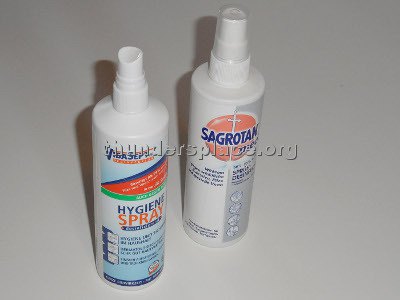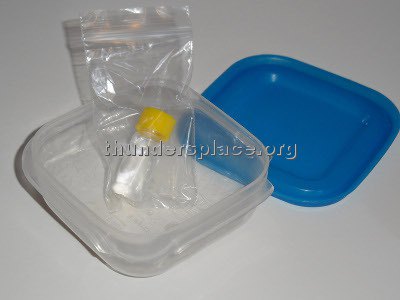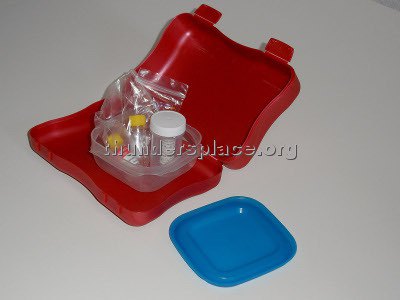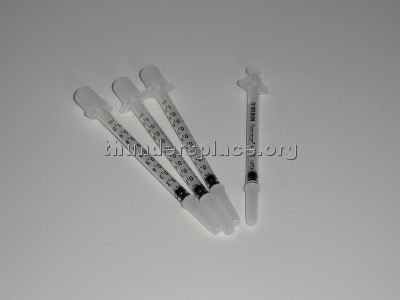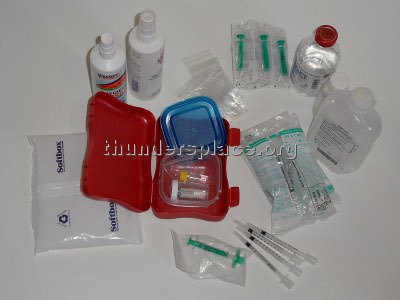The Chemical PE Thread
I am writing here as one of the members partaking of what could be considered to be the first wave of chemical PE back in 2006. Driven by the proclaimed successes of some, interest in the topic rose, just to fall like the tide with the injuries and failures of others.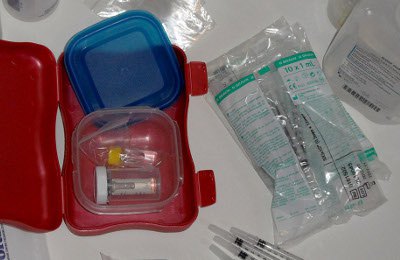 It seems that now, especially on other sites, a growing number of men are willing to dabble in chemical PE. With this more recent surge of interest in the topic, this thread should serve as a place for objectivity to reassess previous experiences, both good and bad, and weigh the potential of chemical PE against its risks. Above all, the intent is to clear the haze of naivety of interested newcomers. In more figurative language, we haven’t yet found the Holy Grail of PE. It might be hidden somewhere in the area of chemical PE but, as sure as death, is guarded by a giant blood-lusting dragon that longs for casualties of long-lasting or worse, permanent penile injury. So this should be a thread for the discussion of promising peptides, and reviews of previous experience.
It seems that now, especially on other sites, a growing number of men are willing to dabble in chemical PE. With this more recent surge of interest in the topic, this thread should serve as a place for objectivity to reassess previous experiences, both good and bad, and weigh the potential of chemical PE against its risks. Above all, the intent is to clear the haze of naivety of interested newcomers. In more figurative language, we haven’t yet found the Holy Grail of PE. It might be hidden somewhere in the area of chemical PE but, as sure as death, is guarded by a giant blood-lusting dragon that longs for casualties of long-lasting or worse, permanent penile injury. So this should be a thread for the discussion of promising peptides, and reviews of previous experience.
For some initial grounding on the history of the topic, here are some links:
Chemical PE Links
Chemical PE progress report
Dr. Adams Chem PE Again
My chemical adventure
My Chemical P.E. Journey
Chemical PE - DIY mixing thread
Topical Chemical PE
Warning to All Newbies to Chemical Penis Enlargement
Chemical PE is yet in a very experimental state. It bears a higher risk of injury than manual PE (stretches, jelqs, etc.) or most mechanical PE (hanging, clamping). Possible injuries include:
- Infections and blood poisoning (sepsis), when basic hygiene factors are not followed with care
- Priapism or chemical imbalances that lead to erectile dysfunction, when dosages of active ingredients are disproportionate
- Nerve damage - which can lead to permanent loss of erectile functionality - when injecting substances with high levels of toxicity
- Internal scarring (fibrosis) when injections are not placed with utmost care, and even
- Permanent deformations when injecting DNA-altering active ingredients.
This list does not exclude other forms of both temporary and permanent injury to the penis, immune system or the entire body of the practitioner.
The safest method to pursue the way of chemical PE is to undergo a program guided by a knowledgeable doctor with a strong medical background in this very area of expertise. Active pharmaceutical ingredients (APIs) of interest in chemical PE are often sold by online stores, underground labs and other manufacturers of dubious origin. Be mindful of the difference between producers of APIs with tens of years of business experience and reputation, that ships bulk quantities to known pharmaceutical companies, and those online dealers who do not indicate the origin and producer of their products. Experimenting with APIs of dubious or unknown origin poses an even greater risk for injury than stated above.
The author of these lines does not, in any way, assume any form of liability for incidents or accidents caused by the practice of chemical PE, even if following this guide. Therefore, understand that if you decide to practice chemical PE you are doing so at your own risk.
The Basics 01: Caverject, Alpostradil, Prostaglandin
So, let’s start from the start. The basic idea of chemical PE is derived from the treatment of erectile dysfunction (ED): to cause, that is induce, an erection by changing the equilibria of specific bodily biochemical agents. This is paired with the idea of priapism: if an erection at mostly full internal pressure which (by far) outlasts a normal erection can cause a phenomenon called megalophallus, then a more controllable erection time solely caused by chemicals constitutes an alternative way of PE. Think of it as a three to four hours long edging session that comes at the cost of injecting a precise dose of chemicals, yet at the freedom of little to no mental and physical stimulation. This is the theory in a nutshell. Doses and injections are where things start get tricky.
The medically most common means for ED treatment are either lab-assisted mixes such as bi-mix, tri-mix and quad-mix (more specifics on these in a future section) or pre-defined mixtures sold by large pharmacy companies such as Pfizer, with the most prominent under the brand name of Caverject. Whichever way chosen, it boils down to injecting a precise and specific mixture of chemical agents with pure, safe-for-injection, bacteriostatic water (or other solutions, which will be addressed more in detail later), as a solution into the penis. The main active component is the chemical Prostaglandin E-1 (PGE-1) in the form of Alpostradil. The name prostaglandin originates from its natural production location in the human body, which is the prostate gland. It should be noted that Prostaglandin E-1 is the raw chemical agent and Alpostradil is the name of the pharmaceutically refined PGE-1. The distinction between the two should not be underrated. Let me elaborate on how peptides such as PGE-1 are produced in the first place, to get a better idea of the difference.
PGE-1 and other peptides are the product of specifically cultured Escherichia Coli bacteria. As such, the raw form of PGE-1 is - in most cases - only 97% pure. The 3% impurities are mainly comprised of E.Coli bacterial residua. To make the chemical agent into a pharmaceutical grade agent requires filtering and X-ray purification. As bacteria size ranges from 0.2 to 2 microns in diameter and from 1 to 10 microns in length, a 0.2 micron filter can be used to remove most of the bacteria residua. Since the purification procedures undertaken by pharmaceutical companies are more complex than just running the PGE-1 in solvent through a filter paper, it is easy to understand why the refined outcome (Alpostradil) is sold at a much higher price point.
The Basics 02: PGE-1 - the good, the bad and the ugly
The previous section introduced prostaglandin E-1 and it’s role in chemical PE. In this section, I’d like to delve into the details and issues of this peptide hormone.
Let’s start with the good: PGE-1 is a very powerful active vasolidator, which is a chemical agent that relaxes smooth muscle cells and widens blood vessels. If dosed correctly, PGE-1 can induce those hard and ideally 3-4 hours lasting erections with strong pressure on the tunica from within. The continuous stress on the tunica with blood pressures surpassing those of a normal erection, yet without the disadvantage of mechanically clamping off oxygen supply to the Corpus Spongiosum, is one of the main benefits of such a vasolidator. Other vasolidators will be dealt with in a later section.
PGE-1 not only opens up the vessels and valves to the arteries that allow an erection to happen in the first place, it also inhibits and regulates the production of collagen. The biochemical mechanisms are not entirely clear. Various scientific studies indicate a positive effect of PGE-1 on the restructuring of highly cross-linked, collagenous tissues such as the tunica and ligaments, yet to a lesser extent than PGE-2.
Moreover, PGE-1 has a variety of other effects on hormones and receptors that to a greater or lesser extent are likely to contribute to growth. The understanding of the mechanisms and interactions at cellular level are yet incomplete. From my personal experience I can however confirm positive PIs from low to moderate doses of PGE-1, including faster built-up to an erection, stronger and longer lasting night-time erections and more engorgement in flaccid state.
The bad side of prostaglandin E1 surfaces when actually handling it in practice. There are three main issues rolled into one:
- It degrades rapidly
- Is tricky to store and
- Hard to dose correctly.
At a temperature of -20°C, PGE-1 has a shelf life of at least 2 years when kept in its original, powdery, dry state. Combined with the fact that both minuscule and precise amounts are required for a single shot, this entails a whole host of practical problems. The amounts required for a single shot are usually in the low single-digit micro-grams range. This is just about the weight in the range between a large particle of dust and a very tiny grain of sand. This makes it barely visible to the unassisted human eye, and simply impossible to weigh - absent of some high-precision analytical scales.
As both a warning and a reference to newbies: the first time you intend to inject PGE-1, I.e. Alpostradil, do not inject more than 3.0 mcg, unless guided by a doctor. Actually it is very stupid to put a needle into your penis without medical assistance at all. It’s not worth spending the majority of your first chemical PE session in a hospital, so it’s better to be highly prepared and to start with a very low dose (should you choose to take your chances). If the dose turns out to be too low, not resulting in a firm and often painful erection after at least 15 minutes or even 30 minutes, you can try and repeat the next day with a slightly increased dose. This process of evaluating your personal dose is called titration; it is among the first steps of a medically assisted chemical PE program or therapy for erectile dysfunction.
Since very few chemical PE practitioners and aspirants can call a state-of-the art analytical scale their own, in order to weigh off even a small multiple of the estimated dose of a single shot, the smallest amount of powder it is possible to reliably weigh must be used. This is then added to the solvent. Dilute this stock solution down to a ratio practicable for both short-term storage and injection. But there’s a catch: once the peptide is in solution, there is practically no way back to the freezer. Peptides, such as prostaglandins, are very sensitive to ice crystallization.
Next to the challenge of wasting precious quantities of API because more than could be used is put in solution, the question should arise: which fluid is chemically appropriate to use as solvent for stockage? In the case of PGE-1, its specification states that basic solutions (pH value > 7.4) cause degradation to PGA and PGB and should hence be avoided. In the same way, solvents based on water should be avoided due to their high potential to degrade PGE-1. This makes organic solvents, such as DMSO, an appropriate choice to reduce the speed of degradation when used as medium term stock. Do not to use solvents with high toxicity levels! Storage temperatures for stock solutions should be in the range of 2°C to 4°C to allow for only moderate degradation over a period of several months. Extracting a very small quantity from the stock solution and diluting it further down to injectable levels in a water-based (aqueous) solution such as bacteriostatic water or phosphate buffered saline (PBS) for injection purposes constitutes the most common way of handling this prostaglandin. PBS is a special form of saline with its pH-value adjusted to human blood, which reduces the burning sensation after injecting. Provided that these steps are carried out in a clean and hygienic environment, the risks associated can be contained.
In the case of Caverject (and others), the included quantity of PGE-1 is in a stabilized form as a result of extensive freeze-drying treatment (U.S. Pat. Nos. 3,952,004 and 3,927,197), which would save most of the hassle mentioned above.
Injection of prostaglandin E1 is pain. Unlike normal erections, those induced by PGE-1 may cause discomfort to unbearable pain. Generally speaking, the higher the dosage of PGE-1 and thus the longer the induced erection lasts, the higher the pain factor, and the soreness resulting from it.
But there are other problems with PGE-1. The results of a follow-up study suggest that large doses of PGE-1 over long treatment periods is likely to cause fibrosis and to some extent even penile curvature. Penile fibrosis (PF) appears to be correlated with the cumulated amount of PGE-1 used over the treatment period, as patients with lower PGE-1 doses were either less prone to develop PF or more likely to recover from their fibrotic changes. The influence of PGE-1 on the development of PF is still unclear and conjectural at best. The main cause for fibrosis appears to be in the method of administration, injection, and thus the perforation of skin and tunica. Other studies however suggest the beneficial effects of PGE-1 to the healing of PF in the case of Peyronie’s disease.
Summing up, PGE-1 and its API Alpostradil is a peptide hormone, and in its function as a vasolidator is of great interest to PE. It has various known, indicated and unknown beneficial effects but also many disadvantages and risks. The bodily reaction to this chemical agent may vary from individual to individual, including hormonal balance and systemic influences just like side-effects from other drugs. Lastly and unfortunately, applying this peptide leaves no practicable alternatives to injections with present-day medical methods.
Further Reading
Prostaglandin E1 in erectile dysfunction. Efficiency and incidence of priapism - PubMed
http://www.natu re.com/ki/journ … ki1996302a.html
The effects of PGE1 and PGE2 on in vitro myometrial contractility and uterine structure - PMC
http://onlineli brary.wiley.com … 05.05499.x/full
PGE1 suppresses the induction of collagen synthesis by transforming growth factor-beta 1 in human corpus cavernosum smooth muscle - PubMed
Effects of a collagen matrix containing prostaglandin E(1) on wound contraction - PubMed
http://www.natu re.com/ijir/jou … l/3900951a.html
http://www.aian … na.org/node/334
The Basics 03: Handling and Storage
As a general notion, chemical PE is above all a matter of diligence and accuracy. This starts with the work space used to fabricate and mix solutions, prepare shots, manage storage, etc. It should be well-lit and sanitized before each and every use. I have two bottles of hygiene spray for that purpose.
Another issue is hand hygiene. Hands should be thoroughly washed and sanitized before touching equipment such as vials, filters, bottles or syringes. Medical gloves (unused, non-returnable) are optional as long as there is no direct contact with the chemicals in use.
As detailed previously, PGE-1 is a rather sensitive peptide and should hence be stored with care. Whereas the long-term stash in its powdery state requires temperatures at about -20°C, in stock solution temperatures around 0°C to 4°C are required. Practically, the vials with powder go into a freezer and the vials with solution into a refrigerator. Modern freezers are built to maintain their contents at a temperature of about -10°C down to -25°C with ease, so the storage of dry PGE-1 over a period of up to a few years shouldn’t be an issue. Even the freezing compartment of a good refrigerator can sustain temperatures of about -18°C, which comes sufficiently close to the target. In contrast to these sub-zero temperatures, the stock solution should be kept just above the freezing point of the solvent, which has its own problems: microbes, spores and other unwanted germs thrive in a non-freezing environment such as a domestic central food storage facility, I.e. Your personal fridge. The question how to sustain a sufficient level of hygiene is one of both costs and effort. Ideally, a separate cooling instance is used for the stock solution and the short-term aqueous solution; a small hotel room fridge appears appropriate for that purpose. The less-costly, not-so-ideal and higher-effort alternative is to store the solution(s) in the domestic refrigerator; obviously not next to old cheese and rotten vegetables, and especially not in close proximity to the refrigerator drain, where germ concentrations are the highest. A practical way of handling peptide storage in co-habitat with groceries is to spare a separate compartment in the refrigerator (yes, an entire compartment!) , and in addition encase the vials in a Russian doll like manner. With meticulous regularity, the refrigerator should be cleaned and its peptide compartment disinfected with hygiene spray. I recommend packing the vials in an airtight zipper bag within an airtight zipper bag within an airtight and easy to clean container, such as a sealed Tupperware lunchbox. Each containment has to be made airtight before and after each use of its contents.
Replace the zipper bags and disinfect the airtight lunch box(es) with the same meticulous regularity, I.e. At least on a weekly basis. The fridge should be set to a very low temperature setting, just high enough to prevent the solution(s) from freezing. I recommend placing a thermometer next to the peptide encasement to control the temperature. Fine adjustments can be made by positioning the peptides further to the front of the refrigerator, for a temperature increase, or closer to the rear, for lower temperatures. So, take your time, prepare each step well, and never underestimate the risk of infection and blood poisoning!
The Basics 04: Injections - a means of drug delivery
If there was one common thing, which every regularly intelligent being on this planet would hate, or at least strongly prefer to do without, it would be injections. This is for a good reason: the skin as a vital part of the organism is damaged, signalled by pain. And, until fully healed, its main functioning bypassed, which is that of a physicochemical barrier, namely the protection from adverse outer influences such as germs, or just about anything non-beneficial and likely dangerous to the organism. If there was any other way of medical administration of a necessary drug, most of us would surely choose the alternative to an injection syringe.
The arguments for this least pleasant way of medical administration can be brought down to its bypassing capabilities, accuracy, and with it, dose efficiency. In contrast to ingestion, I.e. Oral medication, injections bypass the entire digestive tract with its gastric juices, sufficiently acid to break down and disable sensitive chemical compounds. In contrast to topical administration including areas with very thin skin such as beneath the tongue, the genitals and the rectum, injections benefit from higher accuracy and the limits of trans-dermal diffusion. Varying to some extent by individual factors such as skin structure, but also temperature, the capability of a chemical, especially a complex molecule to penetrate the skin is limited by its molecular weight (MW).
There is no precise limit, but as a rule of thumb, the “500 Dalton rule” establishes that the molecular weight of a chemical compound must be at or below 500 Dalton to penetrate the skin, with other authors mentioning even 1000 Dalton as upper limit (a future section on the possibilities of trans-dermal applications will follow). Unimpaired by the limits of trans-dermal penetration, injections moreover allow the deployment of chemicals to a rather precise target area, thus enabling even short-lived peptides to readily attach to suitable receptors in the local tissue, with no or only very little effect on other organs.
An ideal local injection would be dosed and placed in the way that close to none of the chemical leaves the target tissue. This would allow a very high dose efficiency with minimal side-effects. In the case of intra-organic injections, intramuscular injections and even more so injections into the CC, which by an erection is sealed off to an almost closed vessel, accuracy to the organ level is inherent and can be used to great benefit. Consider that the decisive factor of what an API may achieve after docking to appropriate receptors, is the amount of its molecules per volume unit of blood (usually measured in ng/ml, that is nanograms per milliliter). Minimizing the potential volume of blood and cells supplied with blood which the API is diluted and dispersed to thus maximizes the efficiency of its dosage. So injections not only bypass barriers, which strongly reduce the amount of a chemical that enters the body, they may also be used to target tissues with high precision and in the case of the CC without diluting the chemical agent further down as it spreads systemically via the blood flow.
Due to varying individual and external factors, specifics of the chemical compound as well as delivery-enhancing chemicals, there is no constant ratio that could give a precise idea of how much more of a chemical is needed in any of the present alternatives to an injection. In the example of PGE-1, studies suggest a factor of 64 to 128 at which the dose needs to be increased for trans-urethal application in the stead of intracavernosal injection. On a further note, my personal experience is that trans-urethal application of alpostradil does not yield reliable results at all. More resistant barriers of the organism, mainly upper dermis and digestive tract, are likely to increase this rough estimate by another magnitude, given the molecules manage to pass the barrier in the first place.
Further reading:
- The 500 Dalton rule for the skin penetration of chemical compounds and drugs - PubMed
- Treatment of Men with Erectile Dysfunction with Transurethral Alprostadil | NEJM
Sssnrgd..
.Clickdiclack.Rrndhgzzirp..
."Wow!"*
